The Sun stood still and the Moon stayed -- and hastened not to go down about a whole day! -Joshua 10:12-13
Did you have a good New Year's Eve? Did you enjoy not just the fireworks and champagne, but also the Blue Moon (2nd full Moon of the month) that was out that night?
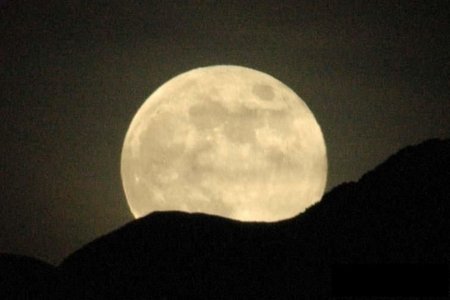
Were you in a fortunate enough part of the world that you not only saw the full Moon, but also managed to see the partial lunar eclipse that happened?
How this happened is pretty simple: the full Moon is always on the opposite side of the Earth from the Sun. When the side of the Moon that's lit up faces Earth, we see it as being full.
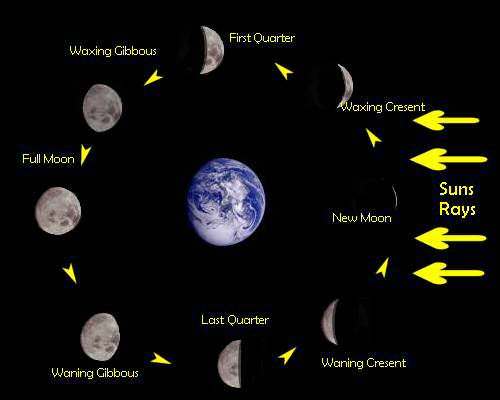
When things are lined up juuust right, the Moon will actually pass through the Earth's shadow, like it did on December 31st! This creates a lunar eclipse: it can be a total eclipse if the entire Moon gets covered by the Earth's shadow, but -- as was the case last week -- a partial one if only a portion of the Moon passes through Earth's shadow.
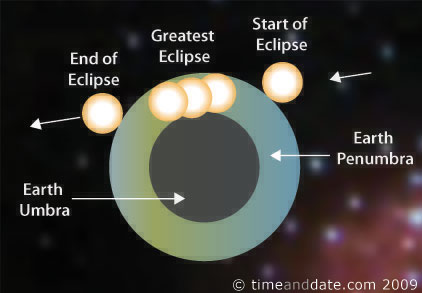
The Moon moves in a big ellipse around the Earth, taking a total of 29.5 days to go from full Moon to full Moon. So half a lunar cycle later (14-15 days), the Moon will be new again, which means the Moon will be in between the Earth and the Sun, and the half that's lit up is not visible from Earth.
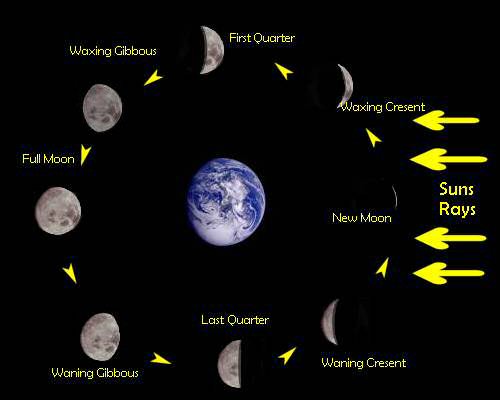
Could this create a Solar Eclipse? Could the Moon block out the Sun? Well, in principle, yes, it could. After all, the Sun will cause the Moon to cast a shadow, and so long as that shadow falls on the Earth, we'll get a solar eclipse.
Here's the thing: you'll never have a total Lunar Eclipse and a total Solar Eclipse in the same Month! Why not? The Earth revolves around the Sun in a plane, but the Moon doesn't revolve in that same plane; it's inclined by about 5 degrees!

So when it's 14-15 days after your eclipse, the Moon is no longer in the same relative position to the Sun and the Earth; the shadows fall on different areas of space.
But back on December 31st of 2009, the Moon just barely fell into the Earth's shadow. 15 days later, the Moon will just happen to be perfectly aligned with the Sun and Earth, which will give us a total solar eclipse!
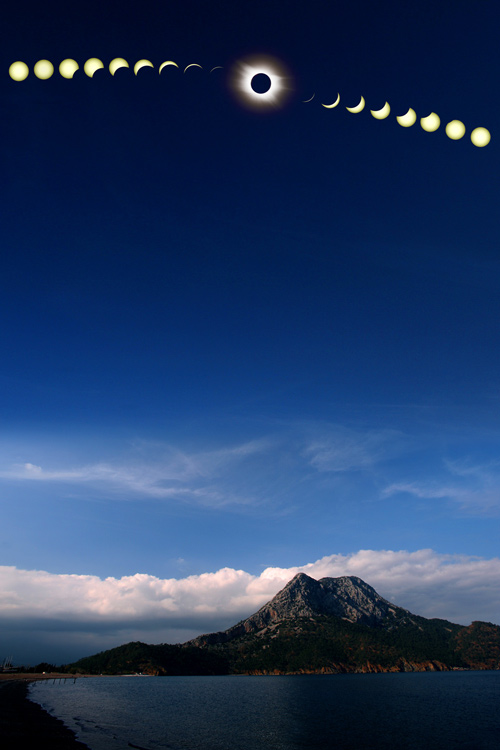
But wait just a second, it isn't just any type of total solar eclipse; there are two different types! You see, the Sun and the Moon appear to change sizes in the sky over time, depending on how close they are to the Earth. The Sun varies between 0.524 and 0.542 degrees in the sky:
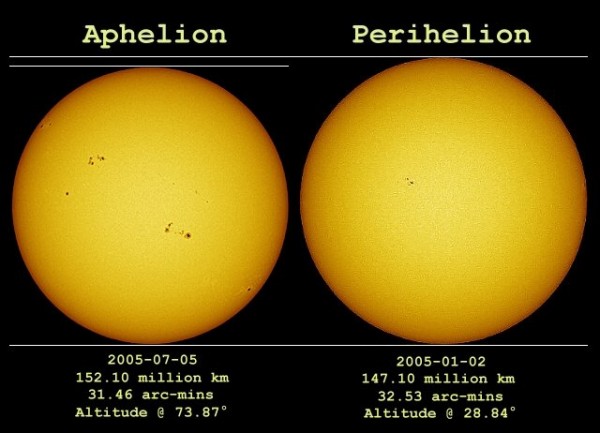
While the Moon varies between 0.498 and 0.565 degrees.
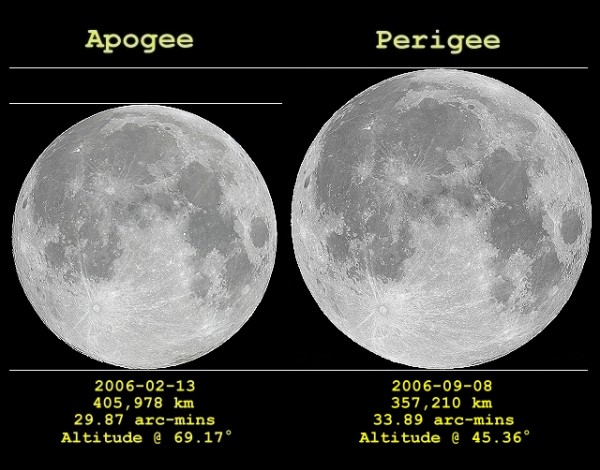
When the Sun appears to be smaller than the Moon, we get a total Solar Eclipse, where the Moon's shadow falls directly on the Earth. But when the Moon appears to be the smaller, the Moon's shadow never reaches the Earth, as the Moon never completely blocks out the Sun!

This creates a beautiful sight known as an annular eclipse, after the Latin word annulus, or ring!
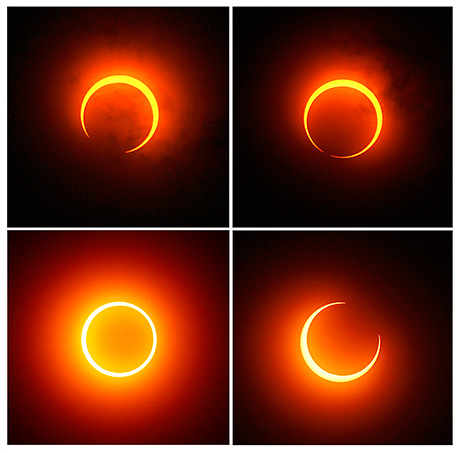
On Friday, January 15, 2010, this is exactly what the Sun, Moon, and Earth will conspire to produce (with the Moon appearing slightly smaller than the Sun): an annular eclipse! This sight can be seen from anywhere highlighted on this map of the world:
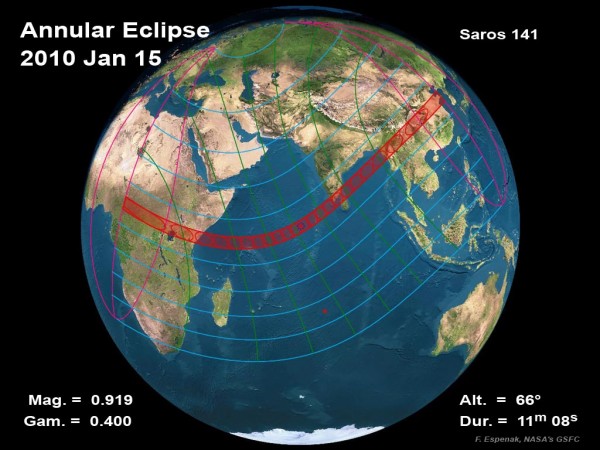
And you can check out this interactive NASA site to see where you can actually view the full annulus! So get out and see this if you live in the right part of the world, and send me pictures!

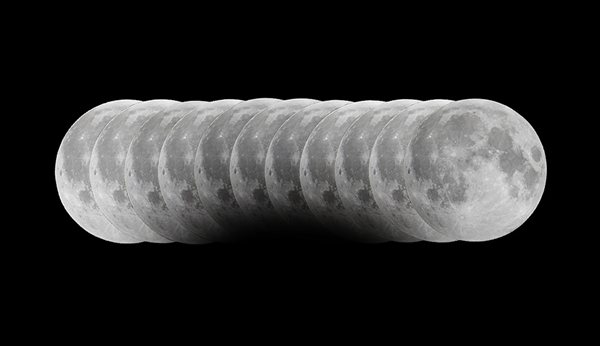
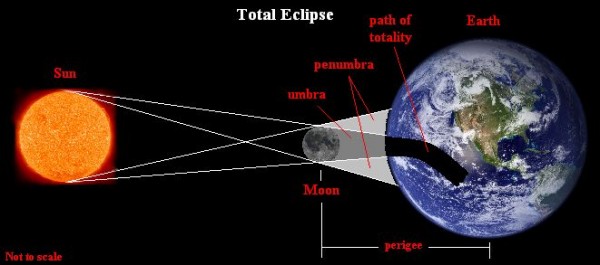
I remember the last annular eclipse in our neck of the woods. It was incredibly beautiful, even more amazing than a total eclipse (and I love those); the illumination was unlike anything I have ever seen before or since. The light that made it through the canopy of leaves above was all silvery--there were no points of light, but circles, varying in size with the distance the leaves were from the ground. Even the grass looked different.
You could, at a sunny spot, hold your hands with fingers cross-hatched with one another, and create circular patterns on your own shadow. I also had the privilege of being able to watch the eclipse through a (properly equipped) telescope, at least for a little while before during the first half. It was magnificent.
So, to answer your questions... no, yes, and no. Of course I saw the blue moon, but the night was not so hot, and I was nowhere near the eclipse...
http://digitalcuttlefish.blogspot.com/2009/12/once-in-blue-moon-its-new…
Too cloudy here in the NW. I have a great Snow Moon pic from 2007, and a montage of partial eclipses from a little later, however. I'll flickr them if you like.
And a memory I will carry forever of one special occasion back in 1978. I was motor-cycling South on rt 395 in CA. The particular section runs due N-S. I am blessed with wide acceptance vision - 110 degrees for each eye. So I was quite distracted for a longish time as the full moon rose in my left peripheral vision while the reddening sun sank in my right peripheral vision. Probably would not have been able to see it so clearly had I been in a car instead of riding my bike. A couple of hours later, by this time I was riding W on 14, there was a 50% partial lunar eclipse.
Why no viewing in Australia? :Cries:
First movies get delayed coming here, then video games, and now even annular eclipses! Someone's going to be hearing about this!
I am almost in the right part of the world, just have to go down south for about 17 hours in a train to catch the annular eclipse for about ten mins :). Hopefully it won't be cloudy!
Dang, in the wrong hemisphere again.
If I miss one more solar eclipse I swear I'll build an occulting cone assembly so I can enjoy watching a total solar eclipse every day.
Just a picture of the moon setting, for the last time in 2009, in the morning of december 31 at 07.27:
http://menorca.infotelecom.es/~caninternet/Moon%20settin%2031-12-2009%2…
And a happy new year to all!
New Year's Eve was eye-wateringly cold and we had the combination of a nice little eclipse, snow on the ground, fireworks, and a prominent circumlunar halo. Very pretty.
I saw the annular eclipse of 1993 from the roof of the building where I was working at the time. Somebody thought to bring some red filter glass up from one of the labs--it was cool to look at the annulus through the glass.
I just missed seeing the 1999 total solar eclipse in Munich. I was there, but it was a mostly cloudy day, and the break in the clouds at my location came seconds too late for totality.
As for New Years Eve: I was in Seattle, it was cloudy with rain in the forecast, and I had an airport shuttle pickup scheduled for oh-dark-thirty for my flight out the next morning. So I missed all of the shows.
Some of us that are significantly ahead of the rest of you (ie UT+12 or so) don't get that blue moon until the end of January.
This happens since the full moon did not occur here in New Zealand until after midnight on new years.
I wonder though, how the heck to they figure out the pathways of the eclipse?! It is as if the astronomers posses an eclipse crystal ball. I know they use physics and all, but still...
@IBY: No big deal - eclipses were predicted by people many centuries ago - even before Newton. One website for example claims that the Babylonians were into predicting solar eclipses (http://www.earthview.com/ages/history.htm) You measure the position of the moon at night and during the day and you see a regular pattern. You measure the position of the sun during the day and you see a regular pattern. Find a nice long brick or sandstone wall, and scratch in the positions of the sun and moon during the day (you can actually do better by not bothering with days where they will clearly not overlap) and look a little closer at those days where they come close. You need a lot of free time, but it can be done with that simple empirical model. It would be rather absurd to suppose that the ancients did not realize that the sun and moon were coming together - after all, you can see the moon during the day. But even if people happened to not notice the moon, if you have an accurate record of the days between eclipses you might spot the pattern - but that's the hard way to do it - you need to live long enough to observe many eclipses and not miss a day, plus the pattern is screwed up a bit by your latitude because a solar eclipse can only be seen from a fairly narrow band across the planet, unlike a lunar eclipse which can be seen from a large portion of the planet.
In the modern era computers are used to compute the relative positions of the sun, moon, and earth; the area in which the eclipse will be visible (and exactly what will be seen) is dependent on the geometry. If you want to play around a little, grab a basketball, a lollipop, and a desk lamp (the old type with an incandescent bulb). Set the lamp far away from the basketball so that the bulb is only ~0.5 degrees across as seen from the basketball. Hold the lollipop so that it is also only ~0.5 degrees across as seen from the basketball. Hold the lollipop to cast a shadow on the basketball, then move the lollipop just a little in any direction to get some idea of how little it has to move to get no shadow at all on the basketball (no eclipse). A softball gives a closer ratio to the size of the earth and moon, but doing things to scale doesn't make sense - otherwise you'd need a light source about 100 feet across and 5730 feet away ... so the apparent sizes will have to do.
@IBY: This page looks OK: http://www.hermit.org/Eclipse/why_months.html
It's simply awesome. I am totaly speechless. I wish I could make such things. Good on you.
Solar eclipse? Where did that come from? Jan 31 was a partial Lunar eclipse.
Interesting stuff, though, MS.
Full Solar Eclipse
On Sunday 22/07/1990 full solar eclipse occurred in Finland first during my lifetime. That was, however, 100 % only on the area of Joensuu narrow strip. Duration of the eclipse was from 4.43 to 4.54 A.M. The fog was covered my land and I couldnât at all see the full solar eclipse.
The next full solar eclipse is to be expected in this country not until after 126 years (2116)! I will then return from Heaven for looking at it on this conventional sky. :-) ï
Arto J Saarinen
Pastor pens.
Psychology senior student (Tampere/open university)
Pellervontie 15
37600 VALKEAKOSKI
+35835849741
+358405341698
arto dot saarinen@elisanet dot fi
Skype: arto_juhani_s tai arto_j_saarinen
http://www.elisanet.fi/arto.saarinen/
aasaasasas
cool stroy bro ps god is real you butt fucking monkeys